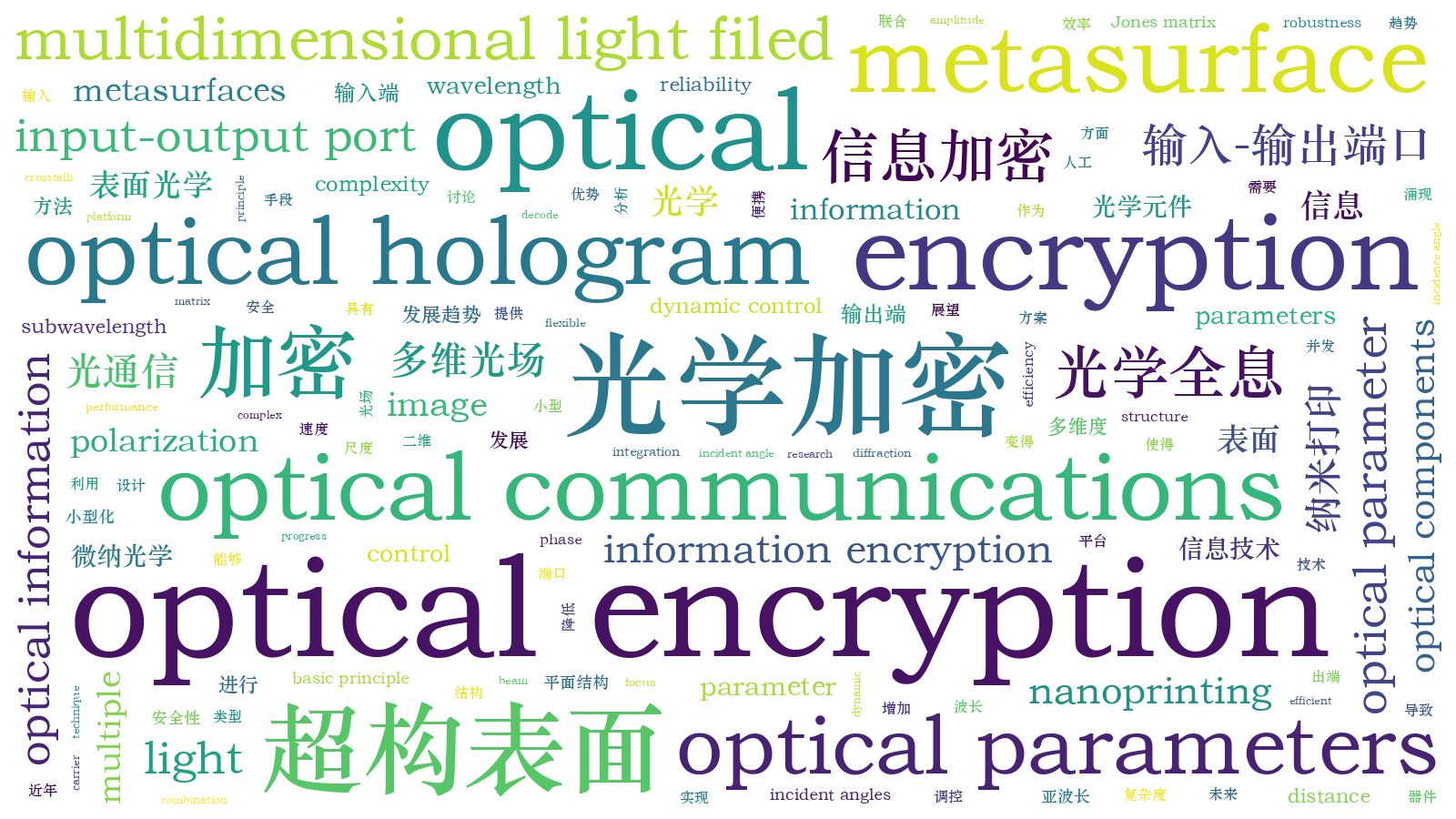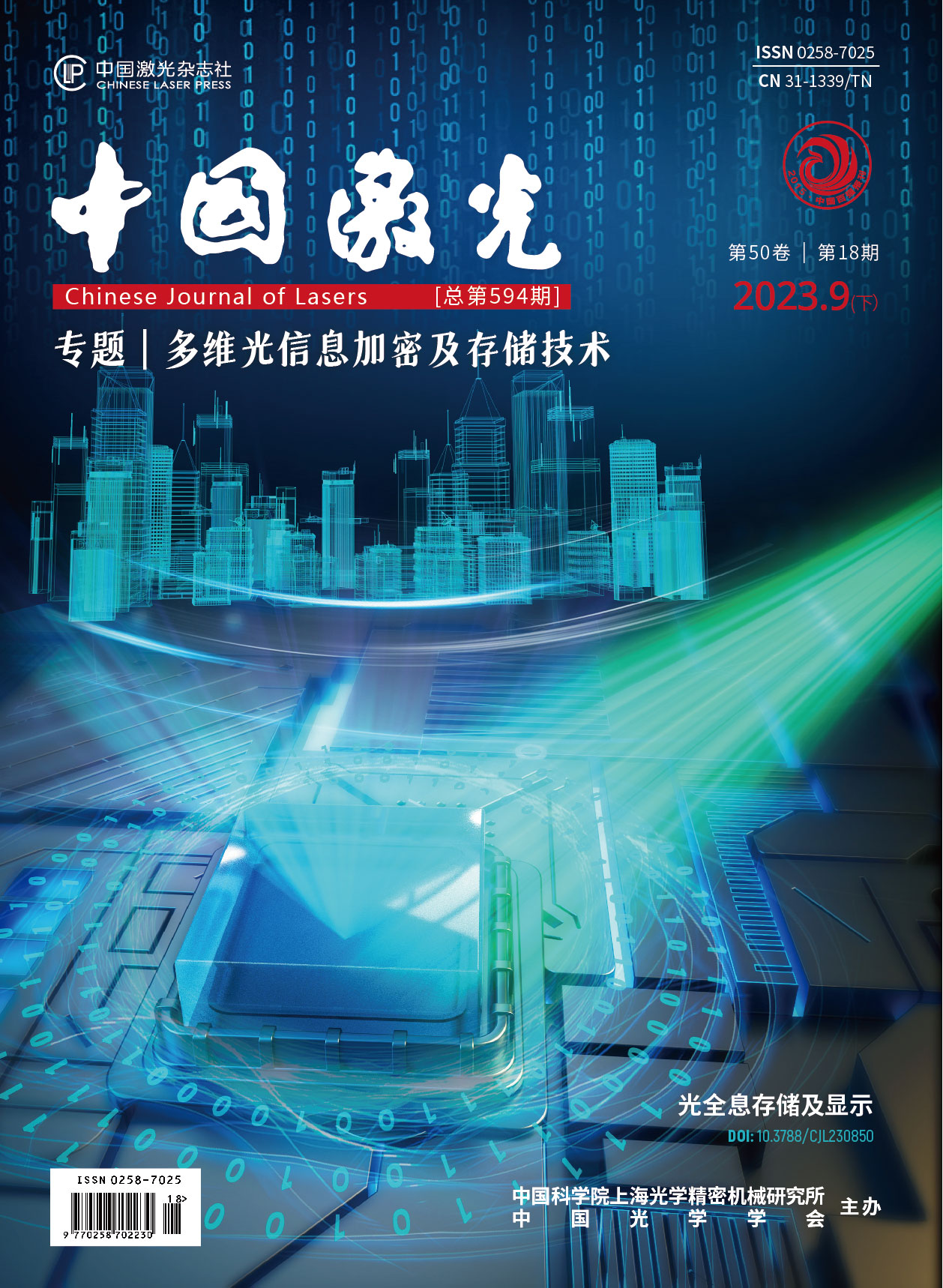基于超构表面的多维光信息加密  下载: 1070次亮点文章特邀综述
下载: 1070次亮点文章特邀综述
Optical encryption is a technique that uses light as a multidimensional carrier of information to encode and decode plaintext images through optical transformations. It has advantages over traditional encryption methods in terms of complexity, security, robustness, and reliability. However, conventional optical encryption schemes often rely on complex and bulky optical components that limit their efficiency and portability. Metasurfaces are artificial structures that can manipulate light at subwavelength scales and control its amplitude, phase, and polarization. They provide a flexible and efficient platform for optical encryption by using different metasurface structures to modulate the incident light and generate encrypted images. The basic principle of metasurface optical encryption is to use the structure to control the input and output keys of the light, the optical parameters modulating the incident light and encrypted image respectively. Only by knowing the correct input and output keys can one decrypt the image and recover the original information. The metasurface structures can utilize different dimensions of light at the input and output ports, such as wavelength, polarization, incident angle, and distance, to achieve single- or dual-port encryption. This study summarizes and discusses three types of metasurface optical encryption schemes, namely, single-input port, single-output port, and input-output port combination, as shown in Fig. 1.
Metasurface-based optical encryption can utilize the multiple dimensions of light at the input and output ports. For any light beam, all of its parameter dimensions at the input and output ports have definite values, and identifying the dimensions that are used for encryption when information for only one image exists is difficult. Therefore, we focus on the optical encryption that changes at least one or more dimensions to encrypt multiple image signals. The optical encryption based on a single-input port is first discussed, where the analyzed parameters at the output port are fixed. For optical encryption at an input port, we discuss the use of only one parameter dimension, such as wavelength, polarization, and incident angles, to encrypt image signals (Fig. 2). The multiple optical parameter dimensions at the input port can be combined to encrypt different image signals to provide more independent encryption information channels (Fig. 3). At the output port, the dimensions of light can be used for optical encryption, whereas those at the input port are fixed (Fig. 4). Finally, input-output port joint optical encryption schemes are discussed, where different combinations of optical parameter dimensions at the input and output ports are used to encrypt and decrypt the image signals. These include polarization dimension input-polarization dimension output (Fig. 5), polarization dimension input-multiple dimension output (Fig. 6), wavelength dimension input-other dimension output (Fig. 7), incidence angle dimension input-diffraction distance dimension output (Fig. 8), and multiple dimension input-other dimension output (Fig. 9).
We discuss the recent progress and challenges of metasurface optical encryption. Various optical-field manipulation mechanisms have been previously proposed based on metasurfaces, which can achieve different degrees of freedom of the Jones matrix from one to eight, the highest possible in nature. This multiple-degree-of-freedom optical-field manipulation and new mechanisms lay the foundation for enhancing the complexity and security of optical information encryption. However, challenges remain in the field of metasurface optical encryption, such as the crosstalk phenomenon, limited utilization of light dimensions, lack of integration with other physical signals, and absence of dynamic control capabilities. We suggest that further research can be conducted to optimize and improve the performance and reliability of metasurface optical encryption and storage.
魏睿, 包燕军. 基于超构表面的多维光信息加密[J]. 中国激光, 2023, 50(18): 1813004. Rui Wei, Yanjun Bao. Metasurface-Based Multidimensional Optical Information Encryption[J]. Chinese Journal of Lasers, 2023, 50(18): 1813004.







